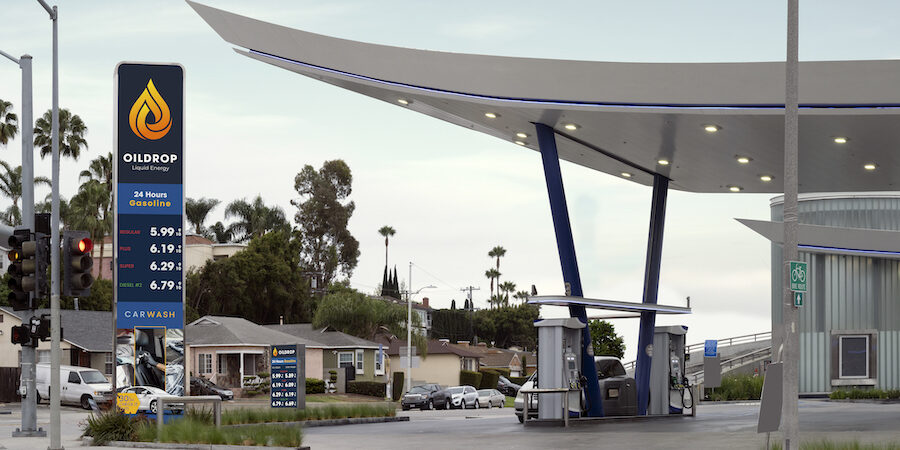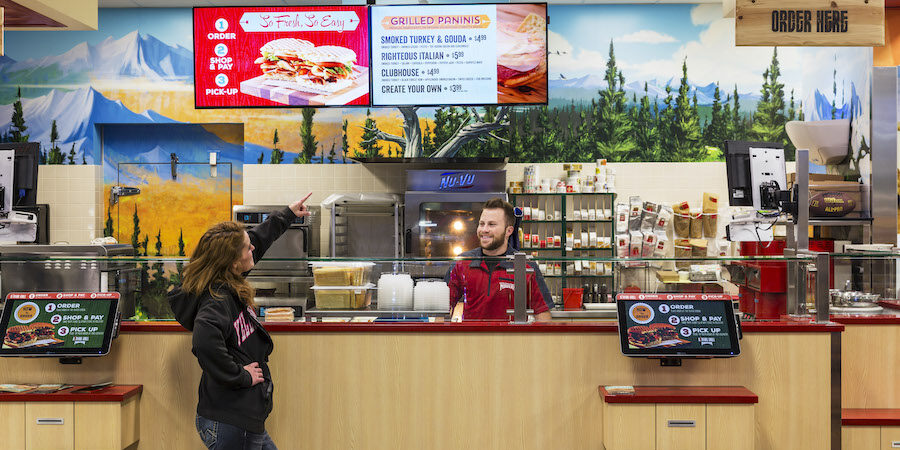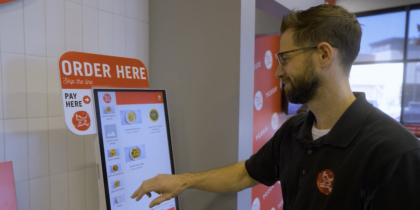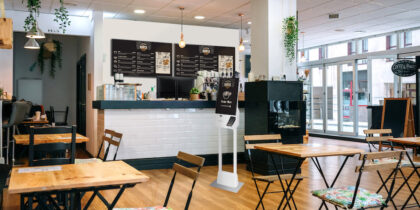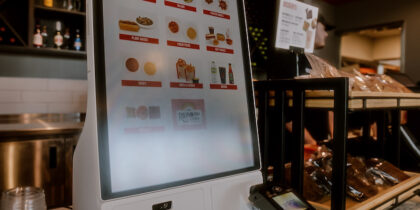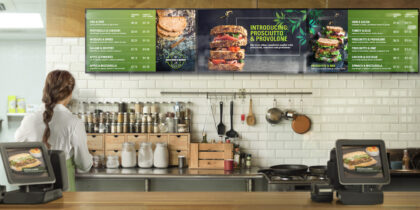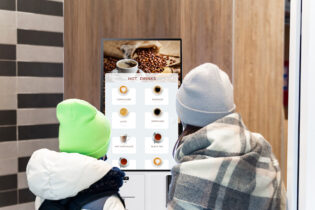Leading convenience stores are using digital solutions to provide shoppers with more convenient fulfillment services, including drive-thru, delivery, curbside and mobile order pickup — increasing customer satisfaction and retention, as well as their basket size. Loyalty programs and apps offer advanced ordering options, personalization and a fully contactless customer experience.
These new services and technologies allow convenience store customers to shop how they want to shop. This is key, since service speed and wait time remain top priorities for consumers. Bluedot’s 2022 Holiday Shopping Habit report found that 6 out of 10 shoppers prefer self-service to staff assistance, largely due to speed. That makes self-service kiosks, such as Samsung Windows All-In-One Kiosk, particularly useful at convenience stores and QSRs by allowing customers to browse, select and purchase items in their own time, with no need for sales assistants.
Digital signage plays a key role in fostering a faster customer experience, whether hanging on their own or integrated into kiosks. At gas station pumps and marquees, for instance, outdoor direct view LED screens, such as Samsung XPR series, can welcome drivers onto the forecourt, and then direct them inside or to the drive-thru with vibrant imagery and messaging. Here are other ways digital signage enhances the customer journey.
Guiding the customer journey with digital signage
When it comes to drive-thru service, speed is the name of the game. Among customers surveyed by Bluedot, 85% said they’ll leave a store if the drive-thru line is too long. But how long is too long? According to consumers, an acceptable wait time at a drive-thru is 6 minutes or less. Anything longer may drive them to other businesses, and 6 in 10 will consider buying food at a coffee chain if fast food drive-thrus have a long line, Bluedot also found.
Increase basket size in the c-store
Get your free guide to digitizing convenience stores to boost sales using digital signage. Download Now
High-brightness outdoor displays, such as the OH-F and OH-N series by Samsung, can be used to create digital menu boards that help speed service and reduce wait times. Window displays, such as the OMN-D series, can also spotlight promotions, which you can tailor to each part of the day to help customers make quicker decisions. Forty percent of surveyed diners ranked a digital menu board to confirm their orders as one of the top reasons they would revisit a drive-thru, for instance. Digital menu boards at the drive-thru and on self-service kiosks in the convenience store can deliver personalized experiences, too — possibly greeting a customer by name, suggesting a regular order and displaying their loyalty points.
With the popularity of drive-thrus soaring by 30% between 2019 and 2022 and accounting for two-thirds of all fast food purchases, convenience stores need to ensure they implement new tech, like digital menu boards, to make the experience even more convenient, appealing, and fast.
Creating personalized experiences
Customer engagement via new loyalty programs and apps will help ensure your stores meet shoppers’ needs. You can use these new programs to deliver timely, relevant messaging, such as a promotion for a healthy snack during the week or a treat on the weekend.
Fuel pay apps, for instance, allow customers who just need some gas to quickly pay with the app and get back on the road. Meanwhile, loyalty programs like Punchh allow convenience stores to deliver personalized experiences, aiming to convert fuel-only customers into in-store customers and increase basket size for regular shoppers. Digital signage boards and self-service kiosks, like Samsung Kiosk, build basket size by encouraging people to spend 20-30% more, on average.
Inside the store, indoor LED signage can be deployed to promote your food and beverage offerings. Behind your service counters, TVs like the Samsung Pro TV can share customized food and beverage content and local menu specialties. Research by Bluedot shows consumers have an appetite for personalized deals and offers and appreciate displays that update them on their loyalty points and available coupons. Inflation means more consumers are actively looking for discounts and offers, too, with 7 out of 10 downloading more apps or joining loyalty programs to win access to deals and freebies.
Integrating loyalty programs within self-service kiosks, like Samsung Windows All-in-One Kiosk, is becoming increasingly popular and is a great way for c-stores to improve their customer engagement and increase customer loyalty. Timely offers and messaging can encourage loyalty scheme members to spend more to redeem extra loyalty points or receive a free cup of coffee, for example. Kiosks can also be used to promote enrollment to convenience stores’ loyalty programs to drive sales and profits with research by McKinsey showing members of a loyalty program are more likely to spend more on the brand.
Well-developed digital loyalty, communications, ordering and display systems offer significant advantages for convenience retailers looking to outsmart the competition. With these digital solutions in hand, operators can engage with customers whenever — and however — they choose to shop.
Learn more about creating high-impact visuals indoors and outdoors with this free guide. Also discover more ways an all-in-one self-service solution, such as Samsung Kiosk, enhances business success.
